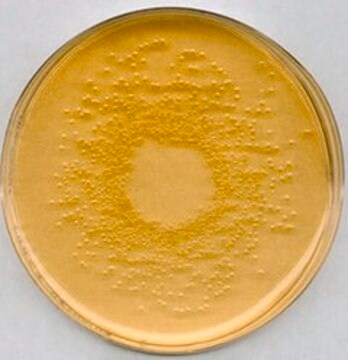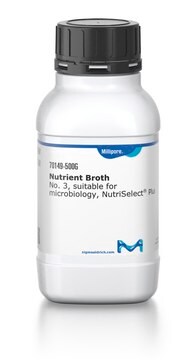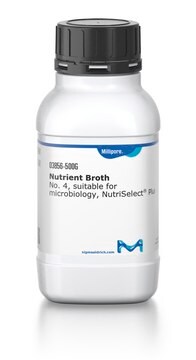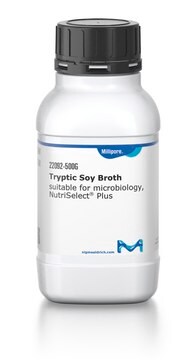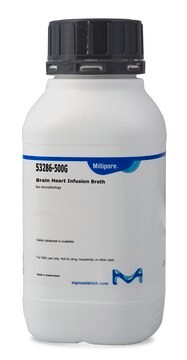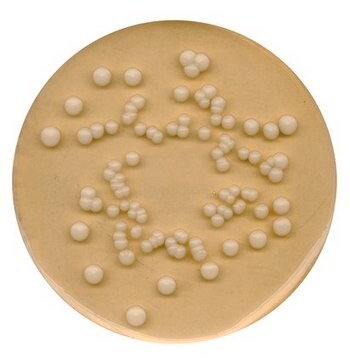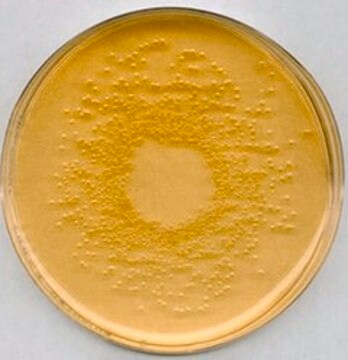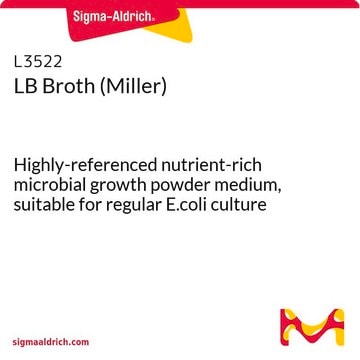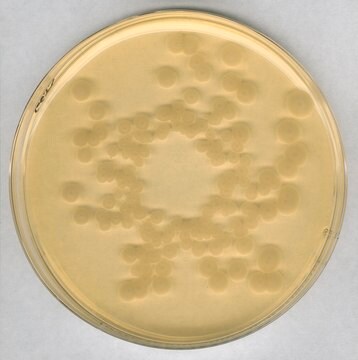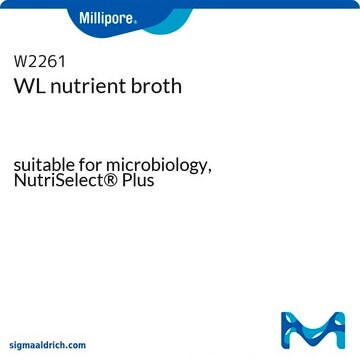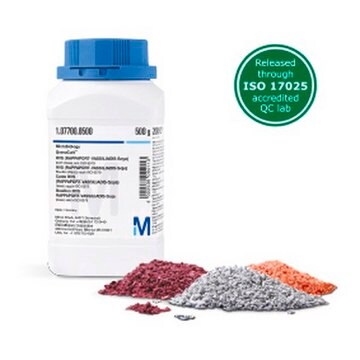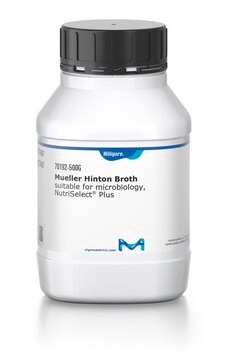70122
Nutrient Broth
Liquid medium used for the cultivation of a wide variety of microorganism, NutriSelect® Plus, suitable for microbiology
Synonyme(s) :
NB, standard nutrient broth, nutrient broth No.1, Standard - Nutrient Broth
About This Item
Produits recommandés
Niveau de qualité
Stérilité
non-sterile
Forme
powder
Durée de conservation
limited shelf life, expiry date on the label
Composition
D(+)-glucose, 1 g/L
peptone, 15 g/L
sodium chloride, 6 g/L
yeast extract, 3 g/L
Fabricant/nom de marque
NutriSelect® Plus
Technique(s)
microbiological culture: suitable
pH final
7.5±0.2 (25 °C)
Application(s)
agriculture
bioburden testing
environmental
food and beverages
life science and biopharma
microbiology
Température de stockage
2-25°C
Adéquation
Erysipelothrix spp.
nonselective for Brucella spp.
nonselective for Escherichia coli
nonselective for Listeria spp.
nonselective for Staphylococcus spp.
nonselective for Streptococcus spp.
nonselective for bacteria (General Media)
nonselective for coliforms
Vous recherchez des produits similaires ? Visite Guide de comparaison des produits
Catégories apparentées
Description générale
Nutrient Broth is a general-purpose fluid media containing yeast extract, peptone, sodium chloride and other basic nutritional requirements for the growth of a wide variety of microbes that don’t require specific nutrients. It is used in the routine cultivation of microorganisms from both clinical and non-clinical samples. Addition of different biological fluids like blood, serum, egg yolk etc. can make it suitable for cultivation of more fastidious microbes.
Application
•Nutrient Broth No. 1 is used for the routine cultivation of microorganisms not requiring specific nutritional requirements
•It is also used for the enumeration and enrichment of bacteria.
•Nutrient Broth No 1 can be used as a base for preparing special culture media.
Notes préparatoires
Note de bas de page
The designations basic, plus, or prime are added to indicate the quality control level, from basic quality control to standard QC plus to prime for full regulatory compliance.
Informations légales
Code de la classe de stockage
11 - Combustible Solids
Classe de danger pour l'eau (WGK)
WGK 3
Point d'éclair (°F)
Not applicable
Point d'éclair (°C)
Not applicable
Faites votre choix parmi les versions les plus récentes :
Déjà en possession de ce produit ?
Retrouvez la documentation relative aux produits que vous avez récemment achetés dans la Bibliothèque de documents.
Les clients ont également consulté
Articles
Streptococci- Overview of Detection, Identification, Differentiation and Cultivation Techniques
Notre équipe de scientifiques dispose d'une expérience dans tous les secteurs de la recherche, notamment en sciences de la vie, science des matériaux, synthèse chimique, chromatographie, analyse et dans de nombreux autres domaines..
Contacter notre Service technique